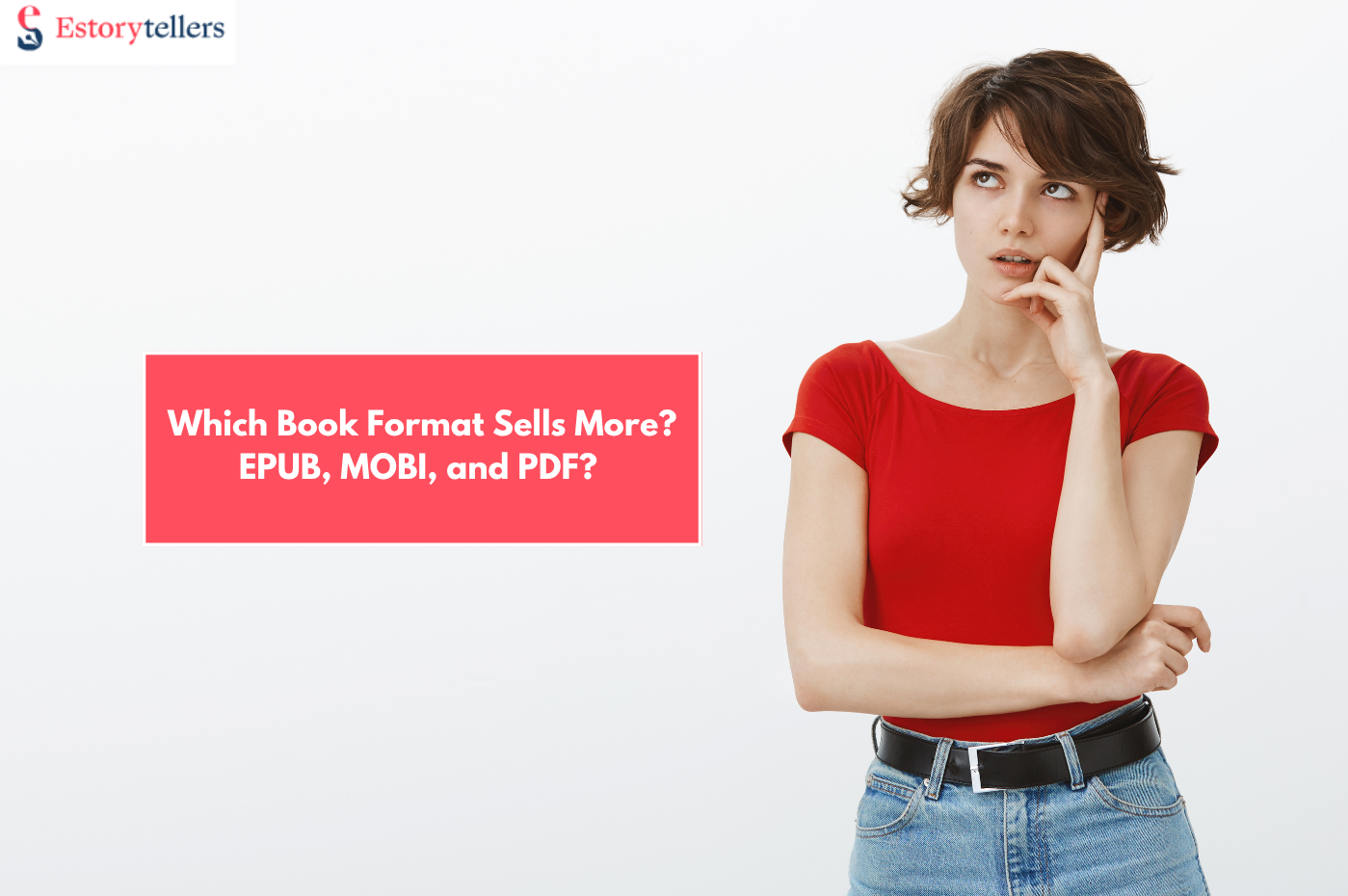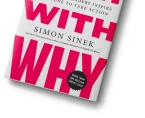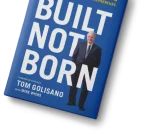
We’ve come a long way from leafing through thick paperbacks under a reading lamp. Welcome to the age of digital books—where libraries live in your pocket, and your next favorite read is just a download away. Ebooks have revolutionized how we consume literature, technical guides, textbooks, and even magazines. But with this digital shift comes a pressing question: which file book format should you choose in 2025?
Among the most popular formats, EPUB, MOBI, and PDF stand out as the big players. Each comes with its own strengths and quirks, catering to different needs and devices. Whether you’re a casual reader, a student, or an indie author gearing up to publish, the format you choose affects more than just the reading experience—it determines compatibility, design flexibility, file size, and usability.
Think of ebook formats as types of luggage for your content. A suitcase, a backpack, or a duffel bag all carry clothes, but each one serves a unique purpose based on where you’re going and what you’re doing. Similarly, choosing the right format helps ensure your content is delivered exactly as intended, without surprises or compromises.
EPUB, MOBI, or PDF?
We guide authors to select the right format based on audience, platform, and pricing goals.
Get Format HelpWhy Choosing the Right Format Matters
Let’s say you’ve got a beautifully formatted manuscript, and you’re ready to share it with the world. Or maybe you just downloaded a guide that refuses to display correctly on your device. Sound familiar? That’s the impact of choosing (or encountering) the wrong ebook format.
Here’s the kicker: not all book formats are created equal. What works flawlessly on a Kindle might crash and burn on an iPad. Some formats are flexible and reflowable (like EPUB), adjusting smoothly to different screen sizes. Others (like PDF) are rigid, maintaining exact formatting no matter where you view them, which is great for design, not so great for small screens.
This isn’t just about aesthetics—it’s about accessibility, readability, and usability. The wrong book format can lead to a frustrating experience for readers, especially those with visual impairments or reading on older devices. And for publishers? The wrong format could mean reduced reach or negative reviews.
Understanding EPUB Format
What Is EPUB?
EPUB, short for “Electronic Publication,” is the most widely accepted open-source ebook format. Developed by the International Digital Publishing Forum (IDPF), it has become a global standard thanks to its flexibility and wide device support. Think of EPUB as the Swiss Army knife of ebook formats—versatile, reliable, and easy to adapt.
EPUB files use XHTML and CSS to structure and style content, much like websites. This means that text in an EPUB book is reflowable, adjusting automatically to fit the screen size of the device. Whether you’re reading on a smartphone, tablet, or e-reader, the content realigns itself neatly, improving the reading experience.
It’s also worth noting that EPUB is supported by virtually all reading apps and devices, except for Amazon Kindle—although some versions of Kindle now support EPUB indirectly through conversion tools.
Advantages of Using EPUB
- Device Flexibility: Works on most devices—iPhones, Androids, Nooks, Kobo, and iPads.
- Reflowable Text: Adapts content to fit screen size, perfect for small screens.
- Open Standard: No proprietary restrictions, making it easier for authors and developers to use.
- Rich Media Support: Allows integration of images, videos, interactive elements, and more.
- Customizable Fonts and Layouts: Readers can change font size, style, background color, and more.
From a reader’s perspective, the EPUB book format offers a smooth, personalized experience. From a publisher’s perspective, it opens up broad distribution possibilities without tying you down to a single ecosystem.
Want your book in EPUB format? Estorytellers Provides The EPUB Book Publishing Services.
Want More Readers?
We professionally format your book in EPUB, MOBI, and PDF to fit all devices and boost readability.
Format My BookLimitations of EPUB
Despite its many benefits, the EPUB book format isn’t perfect. One major downside is its lack of native support on Kindle devices, which still dominate the e-reader market. While Amazon has made strides to support EPUB via conversion, it’s not as straightforward as it could be.
Other drawbacks include:
- Complex Formatting: Complex layouts (like tables or columns) can render unpredictably across different apps.
- DRM Issues: While EPUB supports DRM (Digital Rights Management), implementation varies, which can create inconsistencies.
- Conversion Challenges: Converting EPUB to other formats without losing formatting can be tricky, especially for multimedia-heavy content.
Understanding MOBI Format
What Is MOBI?
Originally developed by Mobipocket, MOBI is a proprietary ebook format owned by Amazon. If EPUB is the open-market darling, MOBI is the exclusive VIP that gets you into the Kindle club. Although Amazon has transitioned to newer formats like AZW and KF8, MOBI remains relevant—especially for self-published authors distributing through Amazon.
MOBI files are designed to work seamlessly with Amazon’s Kindle ecosystem. While this ensures smooth operation within the Kindle universe, it also means that the format is limited in its reach beyond it.
Pros of Using MOBI
- Kindle Compatibility: Perfectly optimized for Kindle devices and Kindle apps.
- Support for DRM: Amazon’s platform offers robust DRM options for copyright protection.
- Efficient Compression: MOBI files are often smaller in size compared to EPUB or PDF.
- Direct Publishing: Ideal for authors using Amazon KDP (Kindle Direct Publishing).
For anyone targeting the Kindle audience—still a massive segment of the ebook market—MOBI is a strong contender. It’s like writing a resume specifically for one job: it might not be universal, but it’s tailored for the opportunity.
Cons of MOBI Format
However, MOBI has notable shortcomings:
- Limited Compatibility: Not supported outside Kindle devices or apps.
- Poor Formatting Flexibility: Doesn’t handle rich media or complex layouts well.
- Outdated Structure: Compared to EPUB, MOBI is considered less modern and more restrictive.
- No Longer Updated: Amazon is phasing out MOBI in favor of newer formats like AZW3 and KFX.
For this reason, even Kindle-centric authors are starting to explore EPUB with conversion tools, to balance reach with quality.
Want More Readers?
We professionally format your book in EPUB, MOBI, and PDF to fit all devices and boost readability.
Format My BookUnderstanding PDF Format
What Is a PDF File?
PDF, or Portable Document Format, was developed by Adobe in the early ’90s to maintain fixed formatting across different devices and platforms. Unlike EPUB or MOBI, PDF files preserve the exact layout, fonts, images, and structure of the original document.
PDF is not technically an ebook format but a document format. Yet, it’s widely used in the ebook world, particularly for professional documents, textbooks, whitepapers, and design-heavy content. Its biggest strength? WYSIWYG—What You See Is What You Get.
Benefits of PDF for Ebooks
PDFs are known for their precision in formatting, which is especially beneficial for content that relies heavily on layout, such as technical manuals, academic textbooks, illustrated books, and marketing materials. Unlike EPUB or MOBI, a PDF file will look exactly the same on every device, ensuring consistency in design and presentation.
Here are some key advantages of using PDF as your book format:
- Universal Compatibility: PDFs can be opened on almost any device—computers, tablets, smartphones—without special software.
- Fixed Layout: Maintains fonts, images, spacing, and formatting regardless of screen size or reader app.
- Print-Ready: Ideal for printable content like forms, contracts, and course materials.
- Easy to Create and Share: Most word processors and publishing tools can export to PDF with minimal effort.
For publishers who prioritize visual fidelity and presentation, PDF is the go-to book format. Think of it like a snapshot of your content—everything remains just where you put it, no matter where it’s viewed.
Drawbacks of the PDF Format
While PDF excels in design preservation, it struggles with readability and accessibility, particularly on smaller screens. PDFs don’t adjust their layout to screen size, which can lead to pinching, zooming, and horizontal scrolling—a major annoyance for mobile readers.
Additional disadvantages include:
- Poor Mobile Experience: Non-reflowable content makes reading on smartphones or small tablets difficult.
- Limited Interactivity: While PDFs can include hyperlinks and some multimedia, they’re not as dynamic as EPUB.
- Lack of Font and Background Customization: Readers can’t easily change font size, type, or background color.
- File Size: Depending on content, PDFs can be significantly larger than EPUB or MOBI.
In short, if your book is more about visuals and less about long-form reading, PDF might still serve you well. But for reader-centric novels or text-heavy content, it might not be the best fit.
Want to Sell Everywhere?
We create your book in multiple formats so it’s ready for Kindle, Apple Books, Google Play & more.
Go Multi-PlatformEPUB vs. MOBI vs. PDF: A Side-by-Side Comparison
To make your choice easier, here’s a quick comparison table that outlines the key differences among the three book formats:
| Feature | EPUB | MOBI | |
|---|---|---|---|
| Reflowable Text | Yes | Yes (limited) | No |
| Device Compatibility | Most devices | Kindle only | All devices |
| File Size | Small | Smaller | Larger |
| Custom Fonts & Styles | Yes | Limited | No |
| DRM Support | Yes | Yes (via Amazon) | Limited |
| Multimedia Support | Rich | Poor | Basic |
| Best For | Casual reading, flexible layouts | Kindle users | Print-ready layouts, academic use |
| Editability | Moderate | Difficult | Easy with software |
This table offers a high-level overview, but the best choice depends on your specific needs, whether you’re publishing or reading.
Reach your readers where it counts. Boost your book’s visibility with Estorytellers’ expert book publishing and marketing!
Compatibility Across Devices
Device compatibility is where formats can make or break your reading experience. EPUB supports a broad range of devices and apps, including Apple Books, Google Play Books, Nook, Kobo, and even some third-party Kindle apps through conversion.
MOBI, being a proprietary Amazon format, works perfectly on Kindle but nowhere else without conversion. That makes it less flexible if you’re targeting a wider audience.
PDFs are universally accessible, but not necessarily user-friendly on all devices. While they open on practically any smartphone, tablet, or computer, the experience can be clunky on smaller screens due to the static layout.
So, if you’re a reader who jumps between devices or a publisher targeting multiple platforms, EPUB wins hands down. If you’re targeting Kindle-only users, MOBI might still be worth considering, though EPUB with conversion tools is becoming the preferred route even in that scenario.
Publishing in EPUB?
Our team ensures your EPUB file is clean, responsive, and meets Amazon & Apple publishing standards.
Create EPUB NowLayout and Formatting Flexibility
Here’s where EPUB shines again. Its ability to adjust content dynamically makes it the king of responsive design in the ebook world. Whether your reader wants large text, a black background, or a serif font, EPUB can accommodate.
MOBI provides some layout adaptability but is significantly more rigid compared to EPUB. You might find that custom styles or formatting don’t render well, especially with complex elements like footnotes, columns, or embedded media.
PDF offers no formatting flexibility. What you see is exactly what every reader sees, which is great for design consistency but terrible for personalization. Imagine trying to read a full-width PDF page on a smartphone—frustration guaranteed.
If your book includes lots of formatting, graphics, and media, EPUB is your friend. PDF might still be the right choice for print-style layouts, but not if you want a user-friendly digital experience.
File Size and Compression
When it comes to storage and speed, file size matters—especially if you’re managing hundreds of ebooks or working with limited device space.
EPUB files are incredibly efficient. Thanks to their ZIP-based structure and reflowable layout, they tend to be lightweight even with embedded images. This makes EPUB ideal for large libraries or faster downloads over slow connections.
MOBI files are generally even smaller than EPUBs. Amazon optimized MOBI to reduce storage requirements, particularly for Kindle devices with limited capacity. That said, the reduction in file size sometimes comes at the cost of formatting quality or multimedia support.
PDFs, by contrast, can become bulky, especially when they include high-resolution images, embedded fonts, or complex layouts. PDFs with full-page graphics, like textbooks or design portfolios, can easily swell to 100MB or more.
For authors and publishers, this means:
- If small size + flexibility is your priority, go with EPUB.
- If you’re targeting Kindle readers, MOBI still has merit, though EPUB-to-Kindle conversion is becoming the standard.
- For graphic-heavy documents, be prepared for larger PDF file sizes.
In short, EPUB and MOBI book formats are storage-friendly. PDF? Not so much.
Confused by File Types?
EPUB, MOBI, PDF — let us take care of formatting your book for every reader, every platform.
Get It All DoneDRM and Licensing Options
Digital Rights Management (DRM) plays a crucial role in protecting your content from piracy. Each format handles DRM differently, and this can impact both accessibility and user experience.
EPUB book formats support multiple DRM schemes, such as Adobe DRM or Readium LCP. However, implementation varies by distributor, which can create compatibility headaches. Some users even avoid DRM-protected EPUBs because they restrict how and where the file can be read.
MOBI, being part of the Amazon Kindle ecosystem, benefits from Amazon’s robust DRM framework. When you publish through Kindle Direct Publishing (KDP), Amazon handles all DRM settings, making it simple for authors to protect their work. However, this also locks you into their ecosystem.
PDF files can be password-protected or encrypted, but these measures are generally less secure than EPUB or MOBI DRM. Additionally, many users find DRM-protected PDFs difficult to work with, especially when trying to open them on different devices or platforms.
For most content creators:
- EPUB offers flexibility but requires careful DRM setup.
- MOBI offers strong protection through Amazon’s ecosystem.
- PDF offers basic protection, best for low-risk or internal-use content.
Best Format for Authors and Publishers
If you’re an author, your choice of format affects not just how your content looks, but how far and wide it travels.
EPUB is the top pick for authors aiming for wide distribution. Platforms like Apple Books, Barnes & Noble, Kobo, and Google Play Books all favor EPUB. With tools like Calibre, Draft2Digital, and Reedsy, converting your manuscript into EPUB has never been easier.
MOBI is still relevant if your sole focus is Amazon Kindle. It’s tightly integrated with the Kindle Direct Publishing (KDP) process, and Amazon takes care of much of the backend formatting. However, note that Amazon has started accepting EPUB uploads, converting them automatically, which might render MOBI obsolete soon.
PDF is often used for academic papers, corporate documents, and printable resources. If you’re publishing a cookbook, brochure, or training manual, PDF might be your go-to. However, for traditional narrative ebooks, it’s not ideal.
Here’s a quick breakdown:
- Want to reach all ebook stores? → Go with EPUB
- Publishing only on Amazon? → MOBI or EPUB (auto-converted by Amazon)
- Need a printable, visually consistent format? → Choose PDF
Publishing on Amazon?
We optimize your book in KDP-supported formats and make sure it displays perfectly on Kindle devices.
Format for KDPBest Book Format for Readers
Now let’s flip the script. What about the reader’s experience?
For most casual readers using iPads, Android tablets, or non-Kindle e-readers, EPUB is the best format. It allows for font size changes, night mode, bookmarking, dictionary integration, and more. It also offers a smooth experience across different apps and devices.
If you’re a Kindle user, MOBI (or Amazon’s newer AZW/KFX formats) works best. Kindle still doesn’t natively support EPUB without conversion, so users typically need to send EPUBs to Amazon via email or convert them with Calibre.
PDFs are okay for desktop readers but are a pain on small screens. The layout doesn’t adapt, zooming is tedious, and reading long documents can be exhausting. Still, for reference materials or highly designed documents, PDFs are useful.
In summary:
- EPUB = Most flexible and user-friendly
- MOBI = Best for Kindle users
- PDF = Best for desktop or large-screen reading
Which Format Is Best for You? Use Cases and Recommendations
So, what book formats should you use? Let’s break it down by use case:
Casual Reading
- Best Format: EPUB
- Why? Supports font customization, night mode, bookmarks, and works across multiple apps and devices.
Academic and Professional Use
- Best Format: PDF
- Why? Maintains formatting for citations, figures, tables, and references. Easy to print and share.
Self-Publishing on Amazon
- Best Format: EPUB (converted to MOBI/KFX)
- Why? Amazon now accepts EPUB files and handles the conversion internally.
Sharing and Collaboration
- Best Format: PDF
- Why? Universally accessible and printable. Ideal for emailing and collaborative review.
Ultimately, your choice depends on your goal: distribution, user experience, or layout preservation.
Wondering If PDF Is Still Worth It?
We advise on which format best suits your genre, pricing model, and distribution goals.
Ask an ExpertConclusion: Making the Right Choice for Your Needs
When it comes to choosing a book format between EPUB, MOBI, and PDF, there’s no one-size-fits-all answer—it really depends on what you’re creating, who you’re targeting, and how the content will be used.
If you’re a reader looking for flexibility and ease of use, EPUB is hands-down the best option. It’s widely supported, customizable, and makes the reading experience smooth across different devices. It’s like the yoga pants of ebook formats—comfortable, adaptable, and works just about anywhere.
If you’re a Kindle user or Amazon self-publisher, MOBI (or better yet, uploading EPUB to be converted by Amazon) is your safest bet. Although MOBI is slowly being phased out, it still has relevance in the Amazon ecosystem. Think of it like a Kindle’s native language—it might not be spoken everywhere, but it’s essential in its home territory.
And if you’re dealing with complex layouts, academic papers, business reports, or design-heavy material, PDF offers unmatched control over presentation. Sure, it’s not great on small screens, but it’s the go-to for any content where layout matters more than readability on tiny displays.
The real takeaway? Choose your ebook format based on how it serves your content and your audience. Consider device compatibility, layout needs, file size, and reading experience before deciding.
The good news is, with today’s tools and converters, you don’t have to limit yourself. You can offer your ebook in multiple book formats and let your audience pick what works best for them. That’s the real power of going digital.
Free Guide: Step-by-Step Book Publishing Process in India (2025): Checklist & Risk-Free Launch
FAQs
What format is best for Kindle?
The best format for Kindle is MOBI or Amazon’s updated KFX/AZW3 formats. However, Amazon now allows EPUB uploads and converts them for Kindle, making EPUB a more flexible option for self-publishers.
Can I read EPUB files on all devices?
EPUB files are supported on most devices except Amazon Kindles. For Kindle, you’ll need to convert the file to MOBI or send it through Amazon’s email-to-Kindle service.
Is PDF still a good option for ebooks?
Yes, but only in specific scenarios. PDF is ideal for content where layout and design are critical, such as textbooks or brochures. For general reading, especially on mobile devices, EPUB is far superior.
How can I convert MOBI to EPUB?
You can use free tools like Calibre, Zamzar, or Online-Convert to convert MOBI to EPUB. Just upload your MOBI file, choose EPUB as the output, and download the converted file.
What’s the easiest format for editing?
EPUB is the easiest to edit, especially if you’re familiar with HTML/CSS. You can use tools like Sigil, Calibre, or Reedsy to make changes. PDFs are harder to edit unless you use Adobe Acrobat Pro, and MOBI is the most restrictive.






























